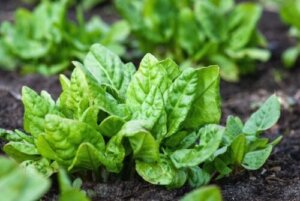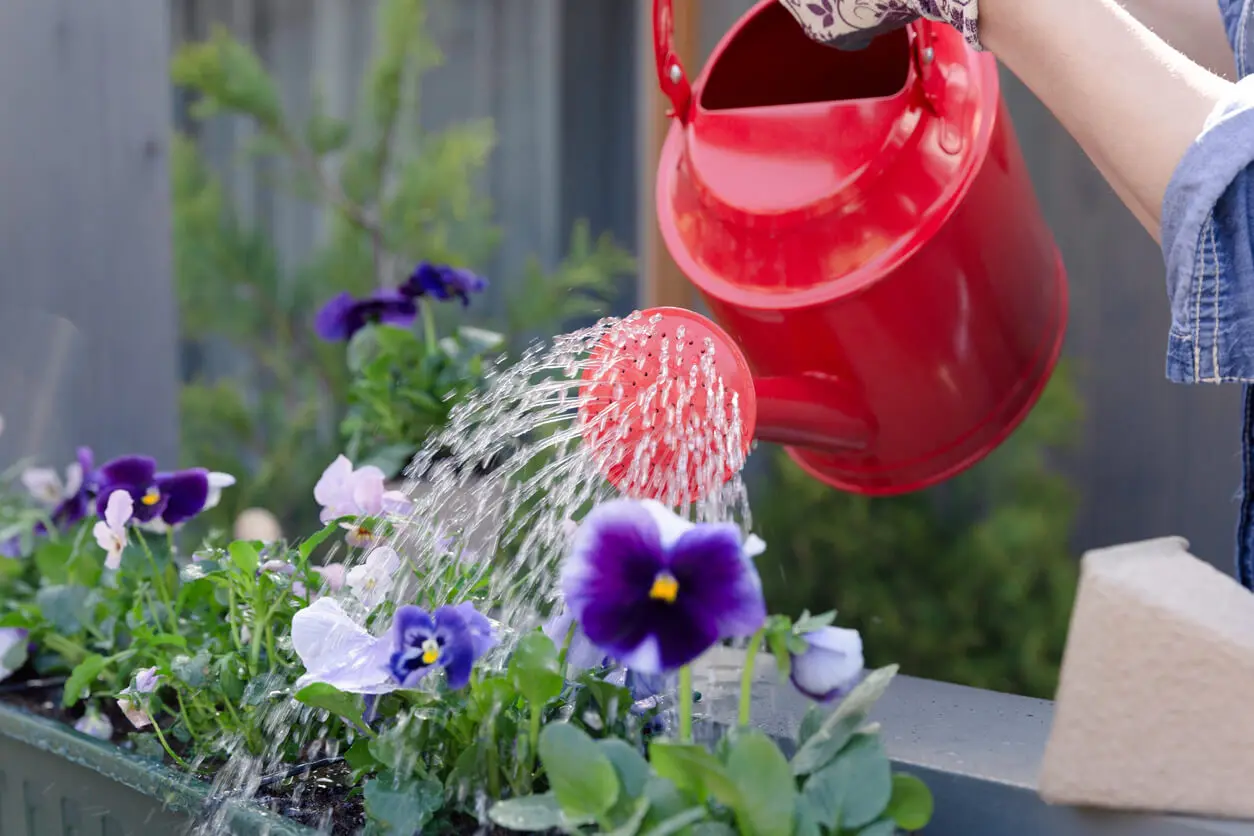Capillary Irrigation: What Is It and What Are Its Advantages?

If you’re into gardening or horticulture, you’ll probably want to know the benefits of capillary irrigation. This is a hydration technique that’s beneficial for both plants and those who care for them.
In dry seasons, capillary watering is an effective resource. It doesn’t require a large investment, nor does it demand constant supervision during irrigation. On the contrary, it’s based on the adaptation of the system to take care of the task without assistance.
Moreover, as long as the installation is appropriate, it significantly reduces the risk of damage to the soil and the crop. We’ll tell you more in this article.
What is capillary irrigation?
Capillary irrigation is used to provide plants with the water they need at any given moment. It does so through the roots, as they act as conductive and absorbent vessels, explains an article from the Water Foundation (FA).
It takes place once the substances contained in the soil reach the leaves. To do this, it’s pertinent to assemble a device that exempts the assistance of auxiliary energy, guarantees the exact supply, and eliminates the probabilities of runoff and waterlogging.
The process consists of the circulation of water thanks to a small channel in the soil, as well as its ascent by the roots so that the plants grow without defects. With this method, the liquid also covers the air remaining in the growing soil.
We think you may also enjoy reading this article: Check Out These 10 Garden Plants that Bloom in Autumn
The advantages of capillary irrigation
The light and uncomplicated assembly is a benefit of watering plants by capillary irrigation. The simplicity of this mechanism doesn’t condition timely plant hydration; when you go on vacation, there’s no need to leave someone in charge of this activity. Here are some other advantages.
Water saving

Applying the principle of capillary irrigation, you spend fewer liters of water compared to traditional irrigation. The plants will always have just the right amount of liquid and there will be no wastage. All this is reflected in the appearance of the specimens, in the bill for the service, and in a contribution to preserve nature’s resources.
Minimal evaporation
Because the water is not stored on the surface, there is almost no evaporation. As a publication from the University of Murcia points out, in dry climates water rises to the plants by capillary action and evaporates at the surface, but the percentage is reduced.
Humidity control
Through capillary action, plants suck up the amount of water they need to maintain their health. The University of Cotopaxi mentions in an investigation that the water absorbed by the roots replaces the water lost through transpiration, while the soil humidity decreases, contributing to its regulation.
Less investment
Not only money, but the time invested in the design and assembly of the system is also less. PVC pipes for this purpose are not expensive and labor is not difficult either. If the plot is too large and for particular purposes, you may need help.
Reduction of watering time
With other methods, you spend time every day watering the plants; the capillary action of the water transforms this reality, and you can use this time for other tasks. The process runs by itself as long as the tank has the necessary fluid.
In orchards or very large gardens, this system is very helpful to moisten the plantation without being in it. And with some variations, the system is even adaptable to pots.
Installing a capillary irrigation system

It’s not necessary to master a great deal of knowledge to install a capillary irrigation system. However, doing the research and taking your time prevents failures in the structure and its subsequent performance. Pay attention to the following steps:
- Locate the area you want to water: The area where you choose to build the irrigation channel requires digging a hole with a minimum depth of 50 centimeters and a width according to the space you intend to plant.
- Level the ground: Make sure to level the soil; otherwise, it will prevent the water from spreading evenly. Remove all nearby elements that interfere with the circulation of the liquid. Also, water the base sufficiently for better compaction.
- Use waterproof fabric: This type of textile is ideal to prevent water absorption in the soil below and on the sides; make sure that the fabric covers the walls.
- Incorporate a pipe: A PVC pipe is the perfect conduit to supply from the outside. Use an “L” shaped one and perforate the base; the mini holes are channeled at the bottom, since you’re looking for the water to come down from the surface and continue its journey to the roots.
- Protect your system from weeds: In this last step, you condition the pit with an anti-weed mesh, designed for permeability, to prevent the passage of light and, mainly, to contain the proliferation of weeds and microorganisms.
All that’s left is to pour the water in from the outside so capillary action can do its job.
Does capillary irrigation work for all crops?
The Water Foundation says capillary action is evident in many plants, including large trees, where water comes in through the branches and evaporates on the leaves.
Although this tactic is suitable for almost any specimen, it’s important to consider individual requirements, since water in the tank may exceed a suitable time and this will impair its quality.
Home gardens and horticultural plots are favored with this irrigation, especially those where planting demands persistent moisture. Avocados, tomatoes, spinach, and peppers are some water-demanding crops.
Like this article? You may also like to read: Tips and Steps to Have an Alpine Garden in Your Home
Does this irrigation method have any weaknesses?
Human error during the installation of the capillary system would affect the development of the crop. If the irrigation mechanism was not set up correctly, the water would not circulate and the consequence would be the wilting of the plants.
By knowing the hydration requirements for each plant, it will be easier to control the permanence of the water in the tank and comply with the corresponding replenishment.
All cited sources were thoroughly reviewed by our team to ensure their quality, reliability, currency, and validity. The bibliography of this article was considered reliable and of academic or scientific accuracy.
- Alcaraz Ariza F. Salinidad y Vegetación. Geobotánica Tema 18. Universidad de Murcia. España; 2012. https://www.um.es/docencia/geobotanica/ficheros/tema18.pdf
- Cunuhay López G, Villagómez León J. Implementación de un prototipo de cosecha de agua para la producción sostenible en un ecosistema árido en la parroquia Cangahua, Cantón Cayambe, Provincia de Pichincha. Universidad Técnica de Cotopaxi. Facultad de Ciencias Agropecuarias y de Recursos Naturales. Ecuador; 2017. http://repositorio.utc.edu.ec/bitstream/27000/5547/6/PC-000258.pdf
- Experimento de las plantas que cambian de color. Fundación del Agua. España. https://www.fundacionaquae.org/experimento-cientifico-la-capilaridad-de-las-plantas/#:~:text=Las%20plantas%20absorben%20agua%20y,finos%20hasta%20una%20cierta%20altura.
- La capilaridad del agua y cómo funciona. Fundación del Agua. España. https://www.fundacionaquae.org/aquae-tv-la-capilaridad-del-agua/
This text is provided for informational purposes only and does not replace consultation with a professional. If in doubt, consult your specialist.








